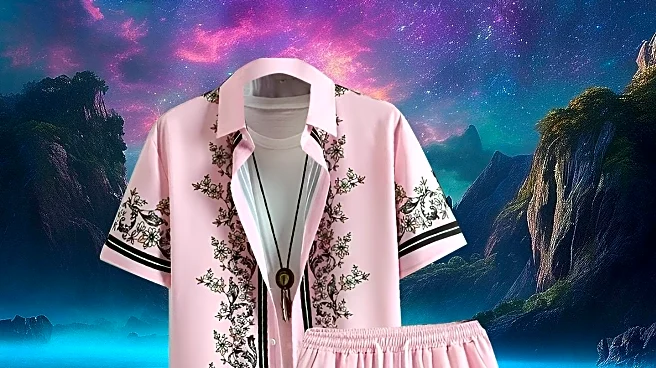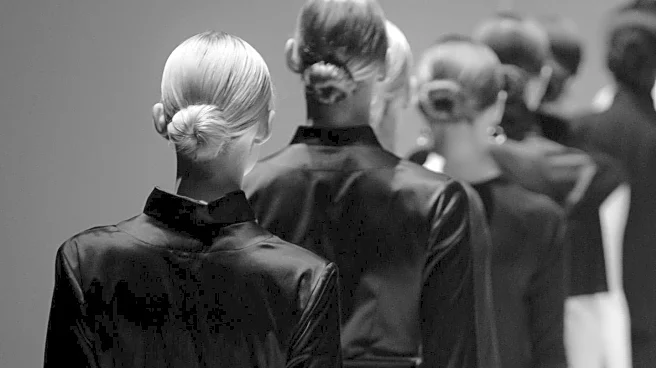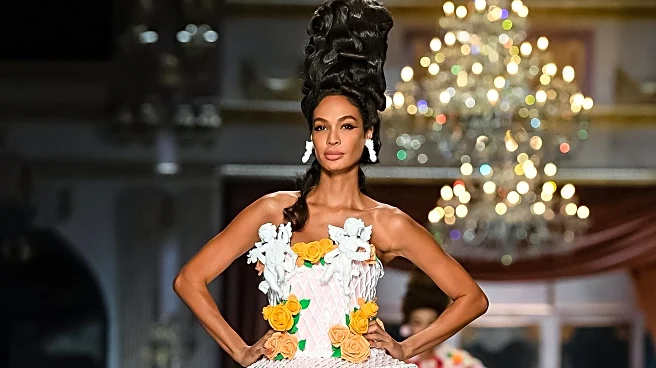What's Happening?
Sunnei founders Loris Messina and Simone Rizzo orchestrated a theatrical farewell during their Spring 2026 Ready-to-Wear collection show. The event, held in collaboration with Christie’s, featured an auction where items were not actually for sale, including a giant Sunnei logo and the founders themselves, encased in a wooden box. The spectacle was a parody of fashion industry norms, with guests receiving scratch-off lottery cards preloaded with 'fashion dollars.' The event culminated in the announcement of Messina and Rizzo stepping down, transforming the show into a metaphorical going-out-of-business skit. This unexpected move has left the fashion community in shock, as Sunnei has been known for its independent and artsy approach, often challenging industry conventions.
Why It's Important?
The departure of Sunnei's founders marks a significant moment in the fashion industry, highlighting the tension between creativity and commercialism. Sunnei has been a beacon of independent thought, often critiquing the industry's focus on branding and financial gain over artistic expression. This event underscores the challenges faced by designers in maintaining creative integrity while navigating the commercial pressures of the fashion world. The founders' exit could inspire other designers to reconsider their roles within the industry, potentially leading to shifts in how fashion brands operate and prioritize their values.
What's Next?
The fashion industry is likely to closely watch the aftermath of Sunnei's founders' departure. Stakeholders may anticipate changes in the brand's direction or management, as well as potential impacts on its market position. The event may also spark discussions among designers and industry leaders about the balance between creativity and commercial success. As Sunnei has been known for its innovative approach, its future under new leadership could influence trends and strategies within the fashion sector.
Beyond the Headlines
The dramatic exit of Sunnei's founders raises questions about the ethical and cultural dimensions of the fashion industry. Their performance critiques the commodification of creativity and the hidden dynamics governing the industry. This event may prompt a reevaluation of how fashion brands engage with their audiences and the narratives they construct. It also highlights the potential for fashion to serve as a platform for social commentary and artistic expression, challenging traditional business models.










